UNDER KNOWLEDGE SHARING , THANKS TO SHRI JKP SIR FOR STARTING KSS, WE HAVE TO IMPROVE THE COOLING WATER SYSTEM BY CHECKING GROWTH ON MICROBIOLOGICAL PART OF COOLING WATER/ DRINKING WATER -CONTINUOUS EFFORTS IS REQUIRED
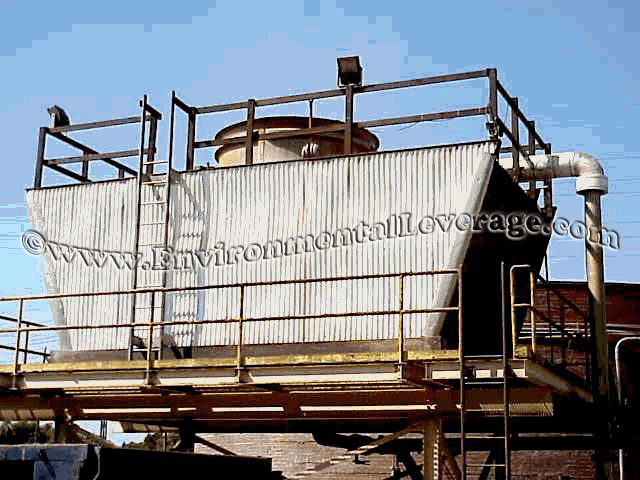 Cooling towers can be a critical process in many industrial production
facilities.
Cooling towers can be a critical process in many industrial production
facilities.
An industrial cooling tower can be the perfect media for biological growth if not properly treated. Typical pH is 7-9 and temperatures may have a wide range.
In a cooling tower, the water trickles down a large surface area in order to air-cool the water. The natural evaporation provides the cooling necessary to reuse the water.
As water evaporates, minerals and contaminants in the water concentrate. These minerals and contaminants will eventually reach a concentration where they will cause problems and interfere with the performance of both the tower and the cooling system, itself. Fouling and corrosion of the cooling tower can impact treatment, and impact heat transfer losses causing decrease in efficiency and increased power consumption.
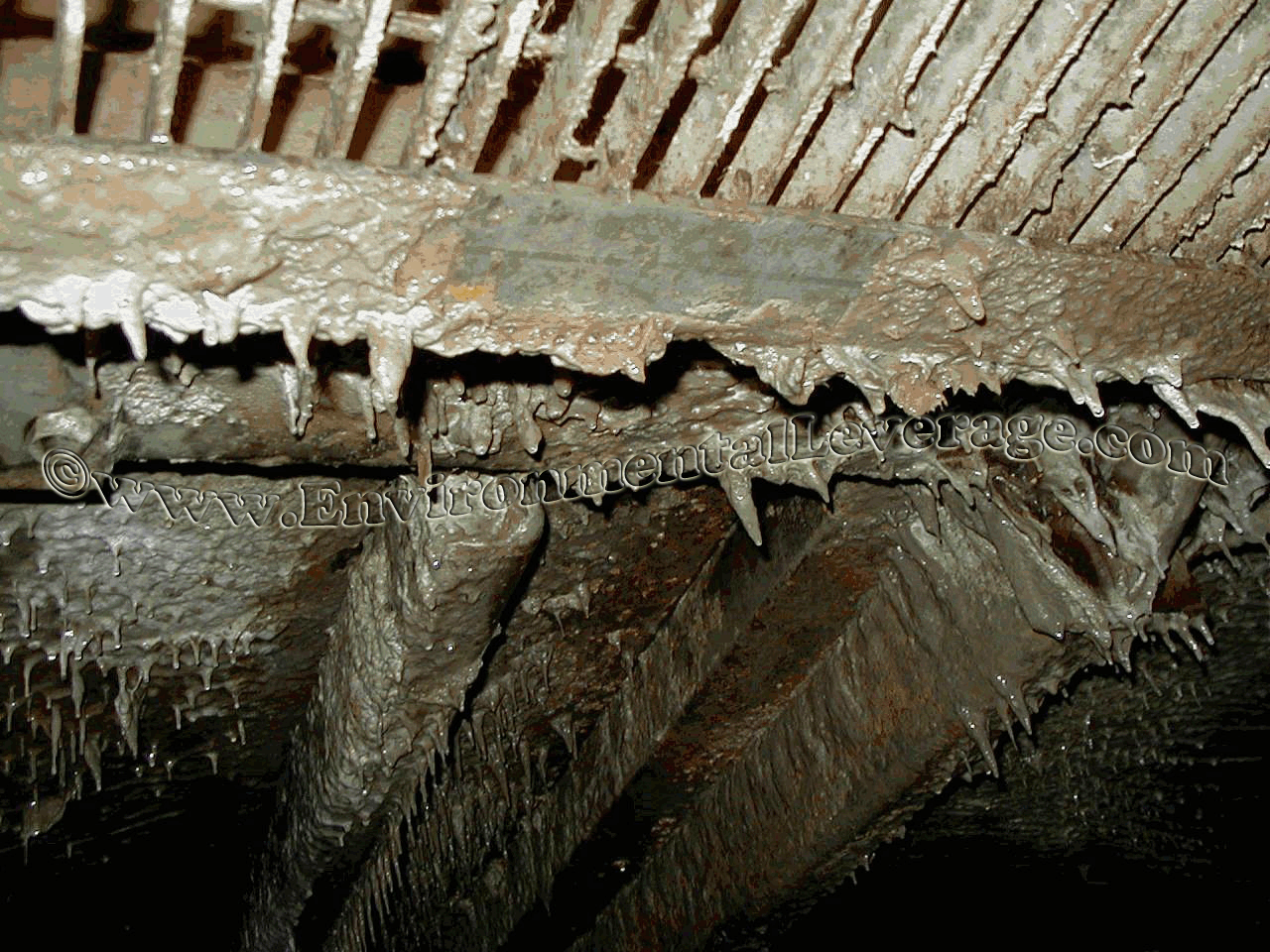 Biofouling
can also destroy cooling towers if they are made of lumber. Corrosion can
occur on metal parts.
Biofouling
can also destroy cooling towers if they are made of lumber. Corrosion can
occur on metal parts.
More seriously, such contaminants can be harmful to humans who come in contact with them, like operational and maintenance personnel. The most notable example has been the outbreaks of Legionnaires' disease, affecting people in hotels, hospitals, office buildings, and other locations, who have come into contact with cooled air from an air conditioning system contaminated from cooling tower water of the air conditioning plant.
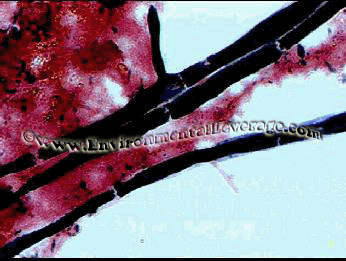 The
presence of large amounts of yeast or fungi can indicate a low pH, or
existence of fermentative conditions. There are more than 75,000 species of
yeast and fungi, which include mold, smut, rust and mildew. They may be
colorless or cover the entire color spectrum. Most grow best in warm, dark,
moist places. Most are aerobic with low oxygen demand. A few, including
yeast, are anaerobic. Fungi can grow on almost any surface and are
considered an attributing factor to wood deterioration. Both yeast and fungi
are commonly transported by air currents. They are relatively large and can
easily be identified with microscopic analyses.
The
presence of large amounts of yeast or fungi can indicate a low pH, or
existence of fermentative conditions. There are more than 75,000 species of
yeast and fungi, which include mold, smut, rust and mildew. They may be
colorless or cover the entire color spectrum. Most grow best in warm, dark,
moist places. Most are aerobic with low oxygen demand. A few, including
yeast, are anaerobic. Fungi can grow on almost any surface and are
considered an attributing factor to wood deterioration. Both yeast and fungi
are commonly transported by air currents. They are relatively large and can
easily be identified with microscopic analyses.
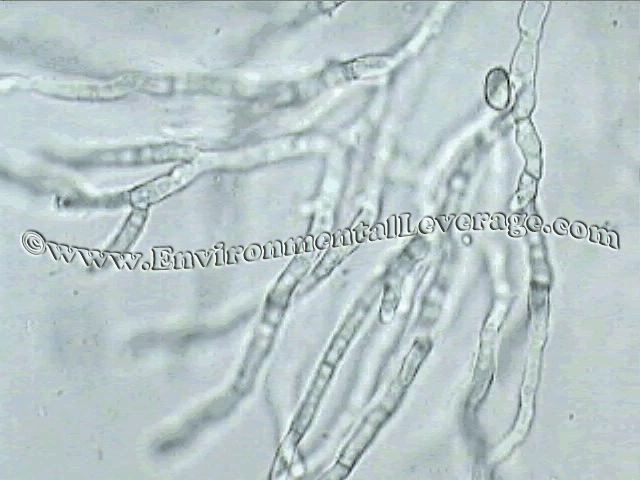
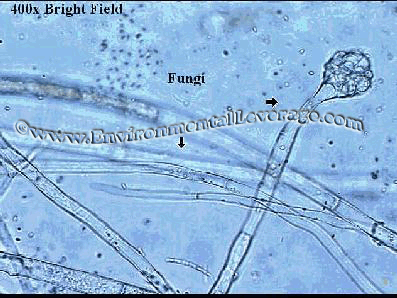 Two forms of fungi commonly encountered are molds (filamentous forms) and
yeast (unicellular forms). Molds can be quite troublesome, causing white rot
or brown rot of the cooling tower wood, depending on whether they are
cellulolytic (attack cellulose) or lignin degrading. Yeast are also
cellulolytic. They can produce slime in abundant amounts and preferentially
colonize wood surfaces.
Two forms of fungi commonly encountered are molds (filamentous forms) and
yeast (unicellular forms). Molds can be quite troublesome, causing white rot
or brown rot of the cooling tower wood, depending on whether they are
cellulolytic (attack cellulose) or lignin degrading. Yeast are also
cellulolytic. They can produce slime in abundant amounts and preferentially
colonize wood surfaces.
Identification:
Fungi are extremely large, non-motile filaments (300-1000 µm). They can be straight, irregularly curved or bent filaments with true branching. Cells are very rectangular (3-8 x 5-15 µm) with very large trichomes and contain organelles and large intracellular granules and structures. A heavy cell wall is usually present.
Environment:
Fungi and yeast are usually found in environments where there is a low pH. They are usually common in a biotower or a trickling filter. They can cause "plugging or ponding".
Control:
Low pH is usually the cause of fungi and yeast. pH can be increased on the influent or in the MLSS to above pH 6 and usually with a little bit of time they disappear.
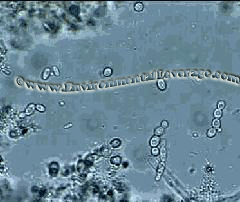
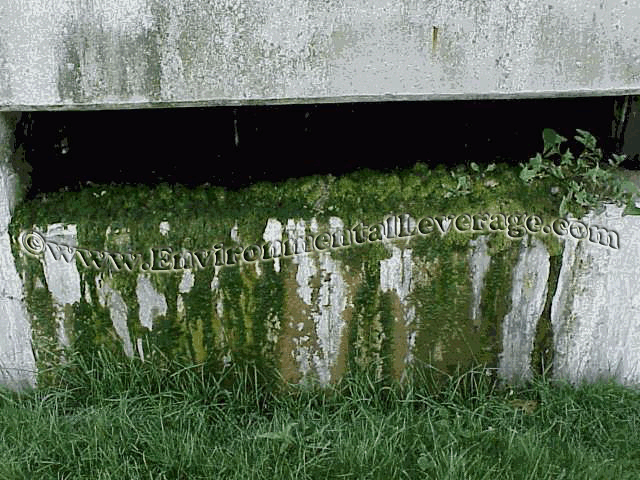 Algae
primarily occur in the tower deck area because most species require sunlight
for photosynthesis and growth.
Algae
primarily occur in the tower deck area because most species require sunlight
for photosynthesis and growth.
Algae slimes can plug distribution nozzles and troughs in the cooling tower deck, causing poor water distribution across the tower and hence reduce cooling efficiency. Water intake screens may also become plugged by algae slimes that can slough off from the tower. The growth of algae may provide a food source that encourages the growth of other organisms, such as bacteria and fungi.
Algae require control because the biomass can also break loose and cause exchanger fouling. When this happens, slimy, rubbery masses form, which cause plugging and decrease the tower efficiency. Various types of algae can be responsible for green growths, which block screens and distribution decks. Severe algae fouling can ultimately lead to unbalanced water flow and reduced cooling tower efficiency.
Algae can be single celled and free floating, filamentous and cause mattes or can be slime forming.
Algae are typically photosynthetic organisms. Green and blue-green algae are very common in cooling systems. Blue-green algae are now classified with the bacteria and are called cyanobacteria.
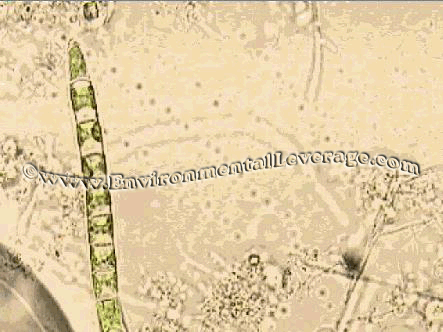
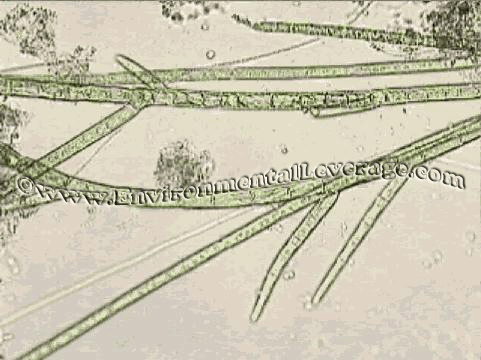
Algae can be curled or in small free floating clusters with a slime coating
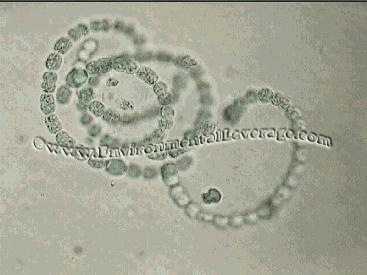
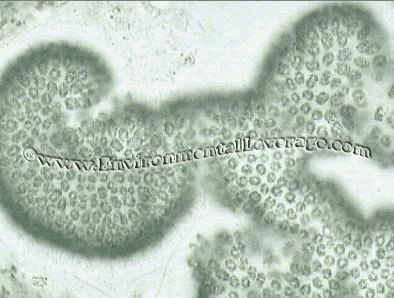
Anabaena Woronichinia naegeliana
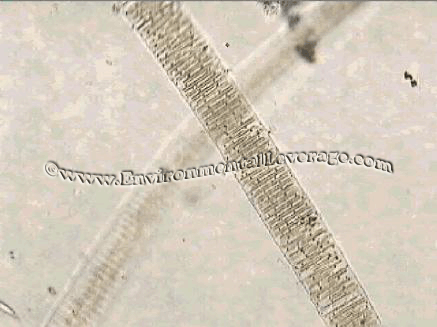
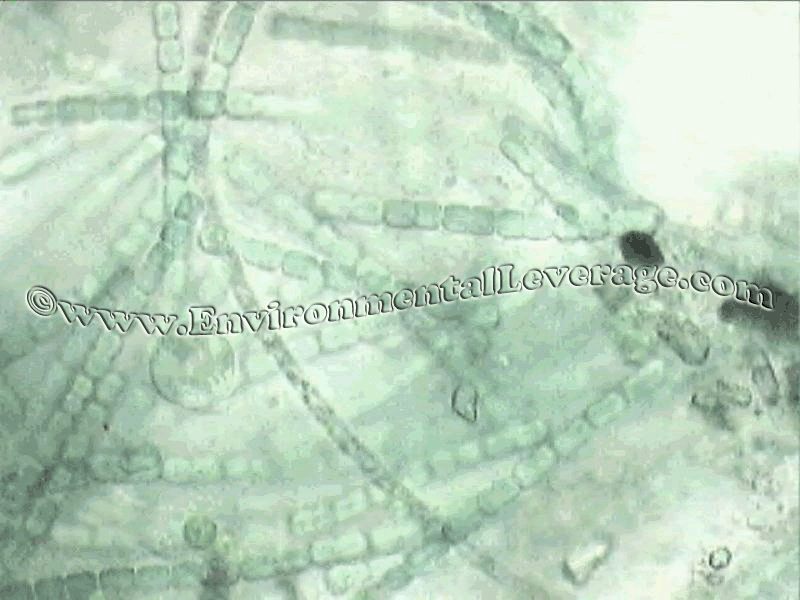 Achnantes taeniata is a brown algae
Filamentous Blue Green algae or cyanobacteria and Beggiatoa
Achnantes taeniata is a brown algae
Filamentous Blue Green algae or cyanobacteria and Beggiatoa

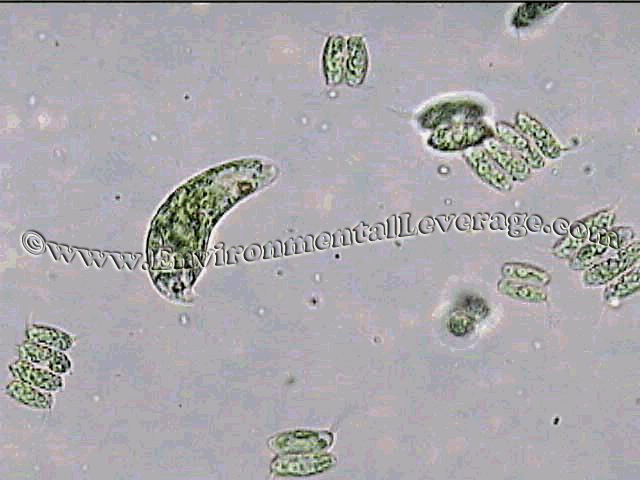
Aphanizomenon flos-aquae Scenedesmus and Flagellate
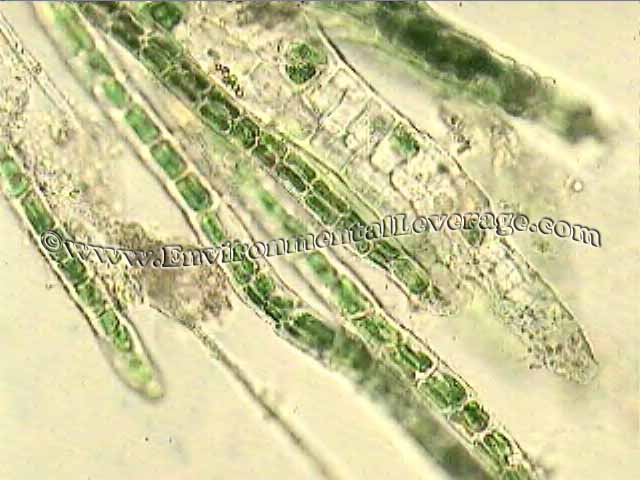
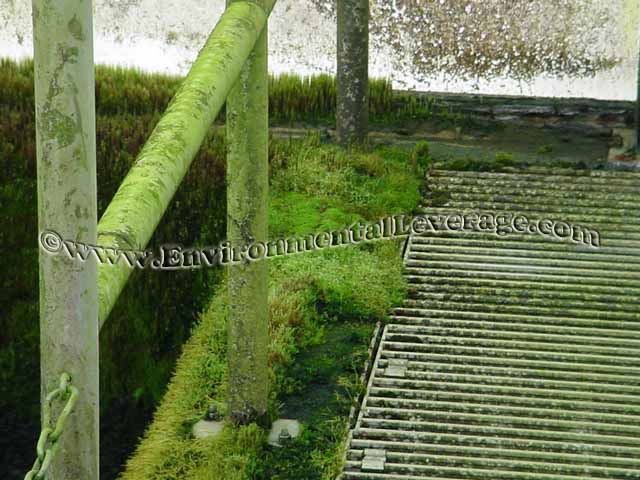
Branched algae Algae growing on cement and metal railings
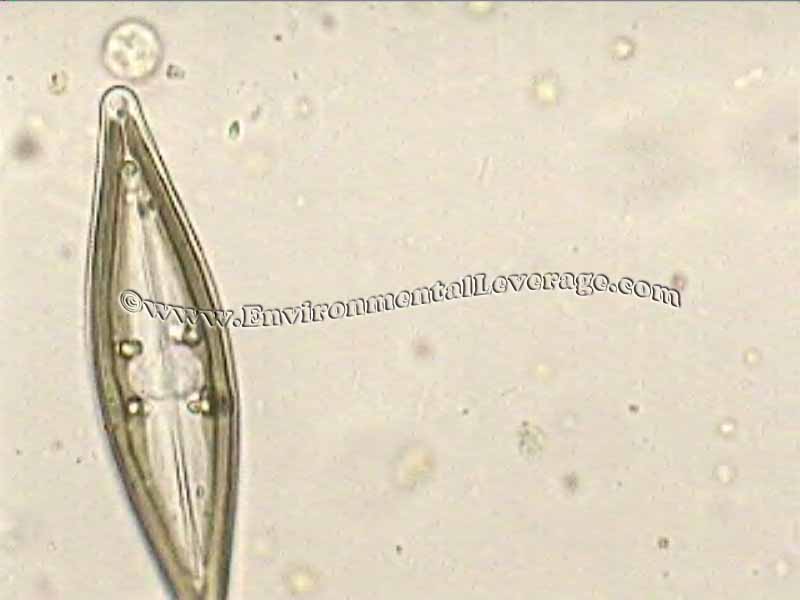
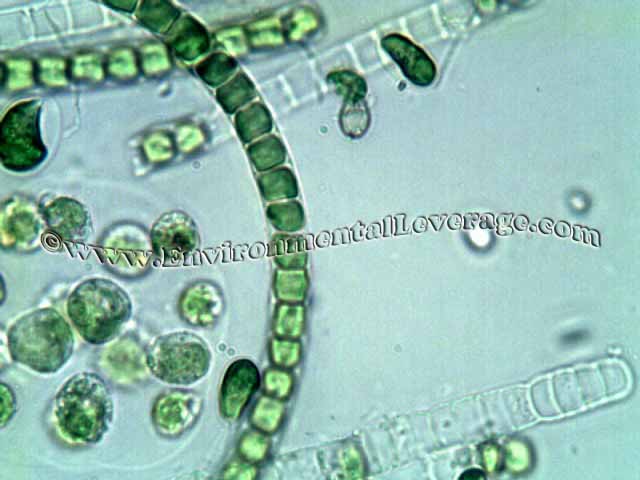
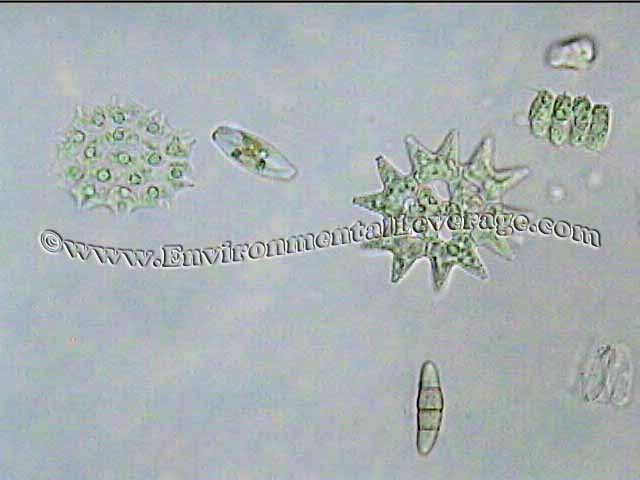
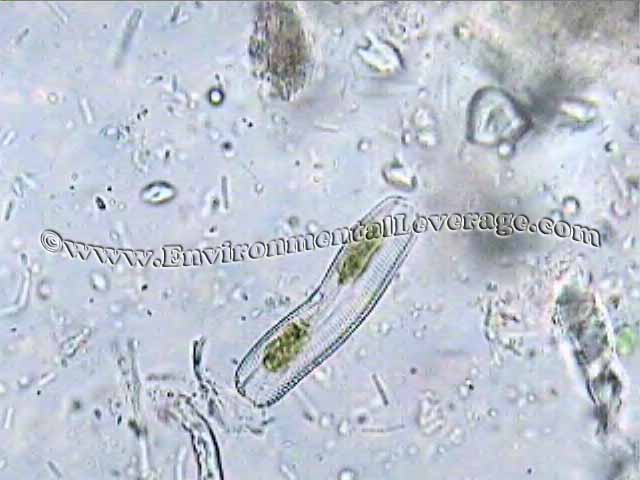
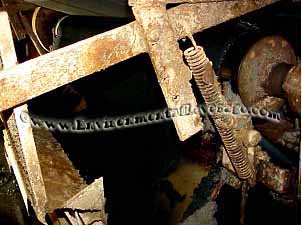 Sulfate
Reducing Bacteria
Sulfate
Reducing Bacteria
can include Desulfovibrio, Purple sulfur bacteria, Beggiatoa, Thiobacillus, Spaeratolis Natans SRBs are characterized by hydrogen sulfide odor and blackened water or black colored deposits. Iron oxidizing bacteria generally form in filamentous clumps and can be detected under microscope by their distinct appearance due the excreted products that grow. This corrosion by iron bacteria often forms tubercles.
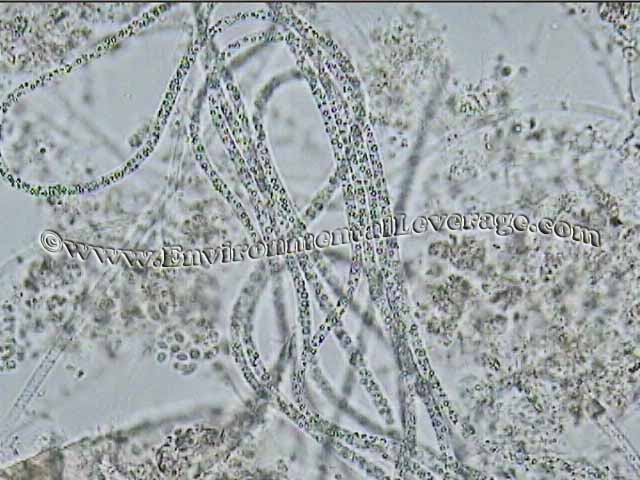
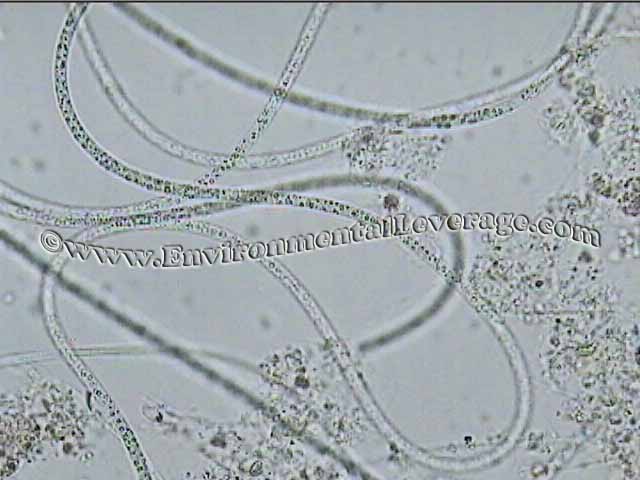
Beggiatoa is a motile sulfur reducing filamentous Bacteria found in many biofilms
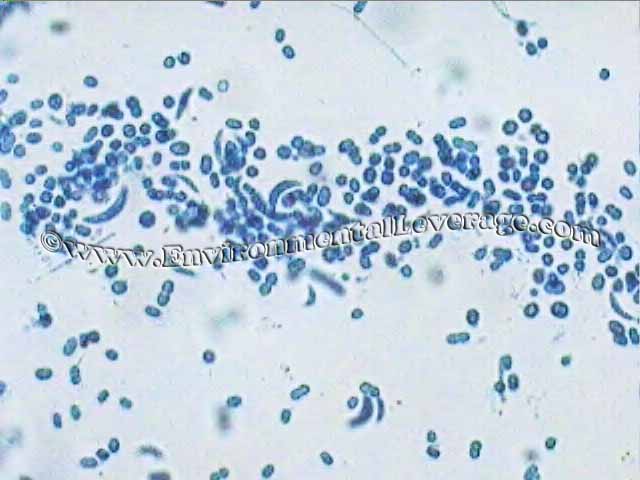
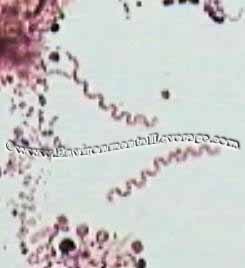
DesulfoVibrio Spirillum
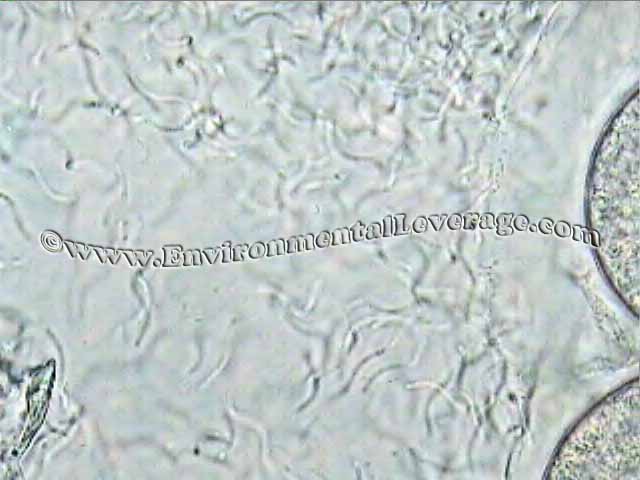
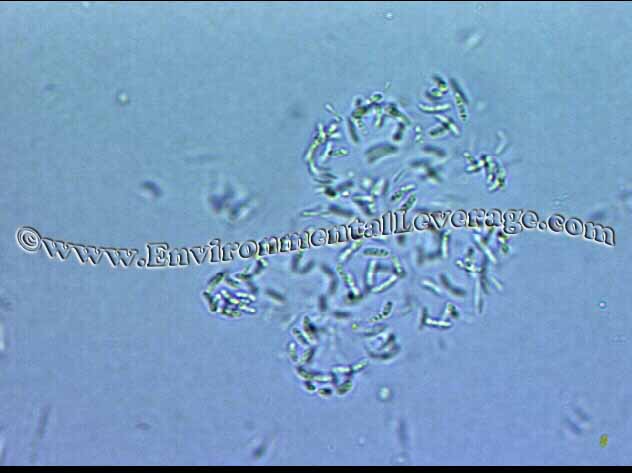
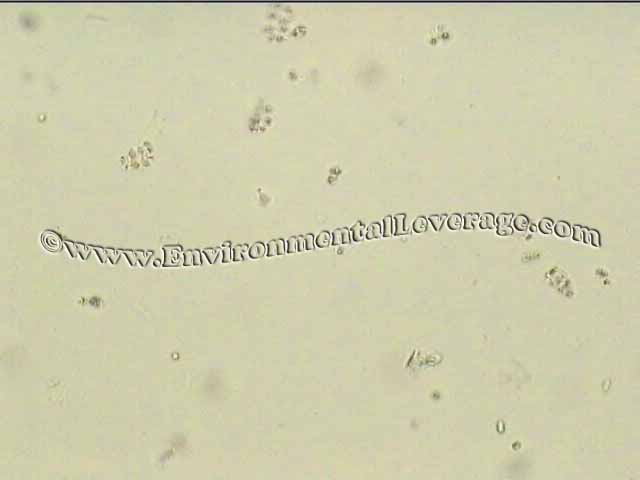
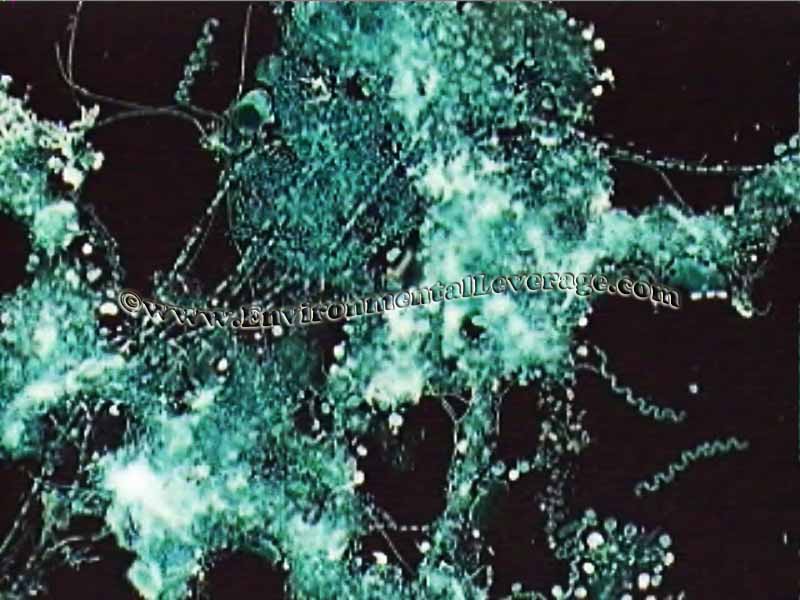
Purple sulfur bacteria Spirillum and S natans
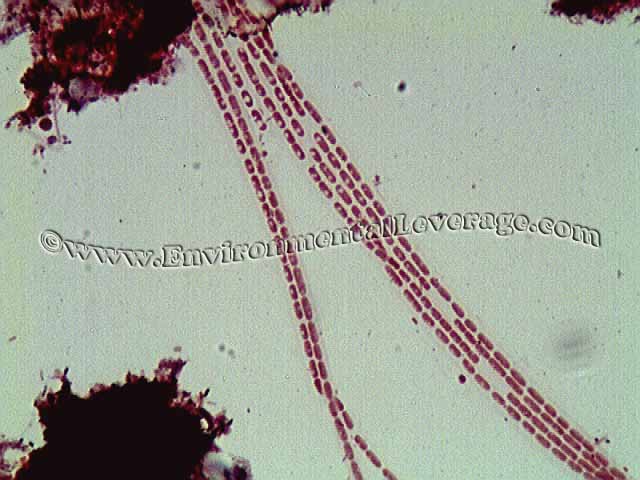
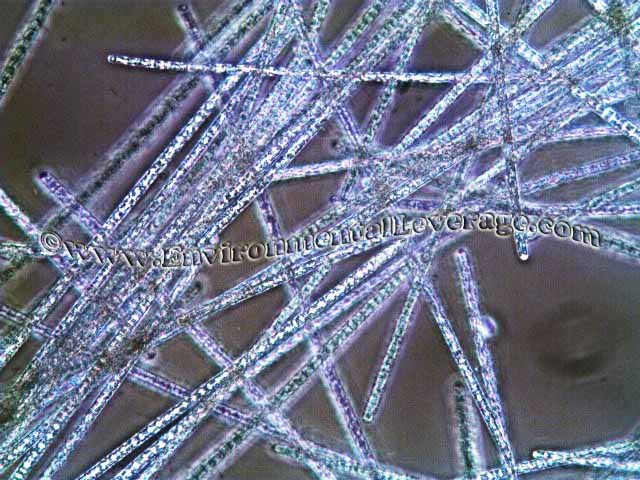
S. natans Filaments with sulfur granules
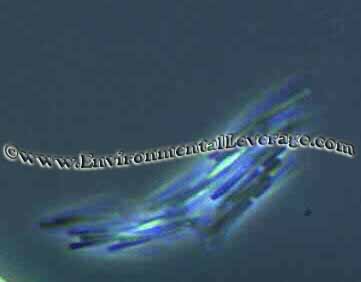
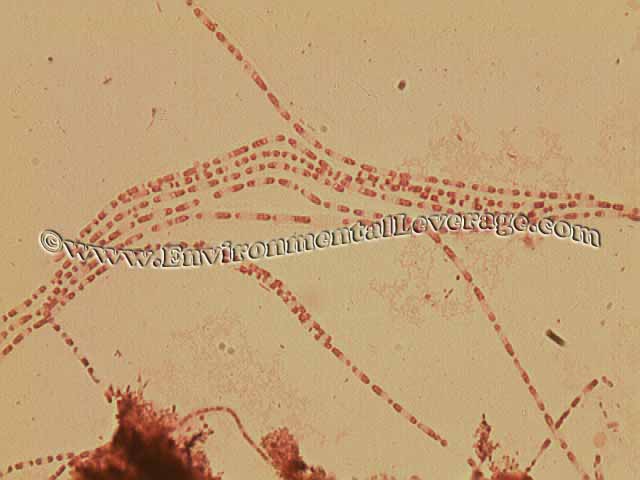
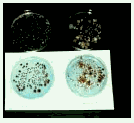 Sphaerotilus use soluble, or ferrous, iron as an energy source, and convert
it to an insoluble oxide or hydroxide form. These deposits create fouling
and set up concentration corrosion cells and conditions under which
anaerobic bacteria flourish. Gallionella frequently leave spiderweb-like
deposits on metal surfaces. The deposit looks like black iron. Severe
corrosion is usually evident under the deposit.
Sphaerotilus use soluble, or ferrous, iron as an energy source, and convert
it to an insoluble oxide or hydroxide form. These deposits create fouling
and set up concentration corrosion cells and conditions under which
anaerobic bacteria flourish. Gallionella frequently leave spiderweb-like
deposits on metal surfaces. The deposit looks like black iron. Severe
corrosion is usually evident under the deposit.
Gallionella spp.,
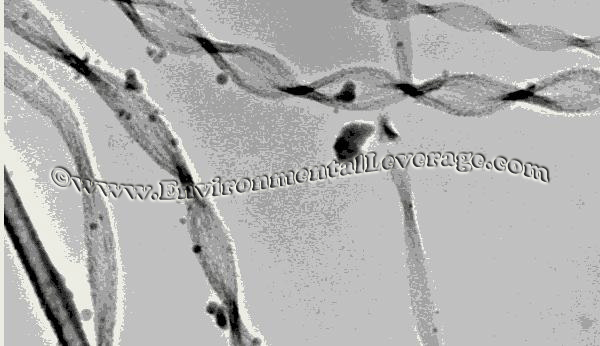 Other
bacteria that may be present in cooling water include Pseudomonas,
Klebsiella, Eneterobacter, Acinetobacter, Bacillus, Aeromonas, and
Legionella Spore forming bacteria Denitrifying bacteria, or pseudomonas, can
cause the loss of nitrite inhibitor in closed-water systems. Usually plate
counts with differential media are used to determine the exact count of
these types of bacteria
Other
bacteria that may be present in cooling water include Pseudomonas,
Klebsiella, Eneterobacter, Acinetobacter, Bacillus, Aeromonas, and
Legionella Spore forming bacteria Denitrifying bacteria, or pseudomonas, can
cause the loss of nitrite inhibitor in closed-water systems. Usually plate
counts with differential media are used to determine the exact count of
these types of bacteria
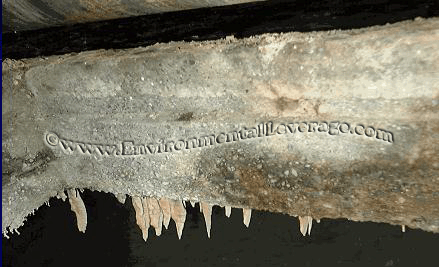
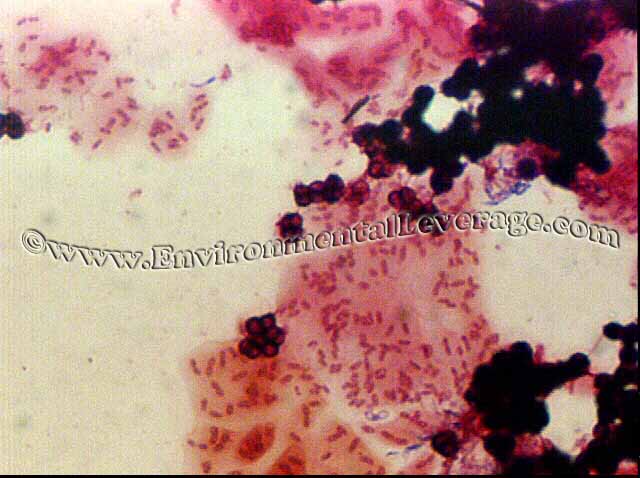
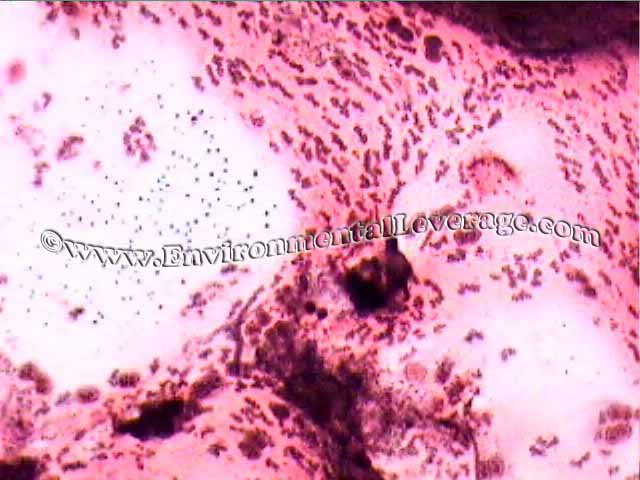
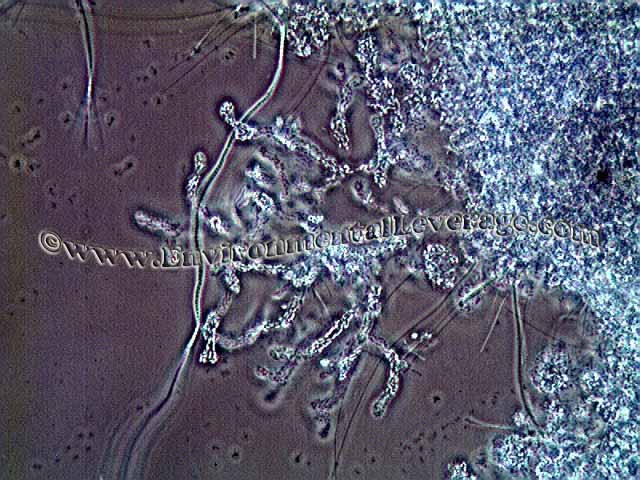
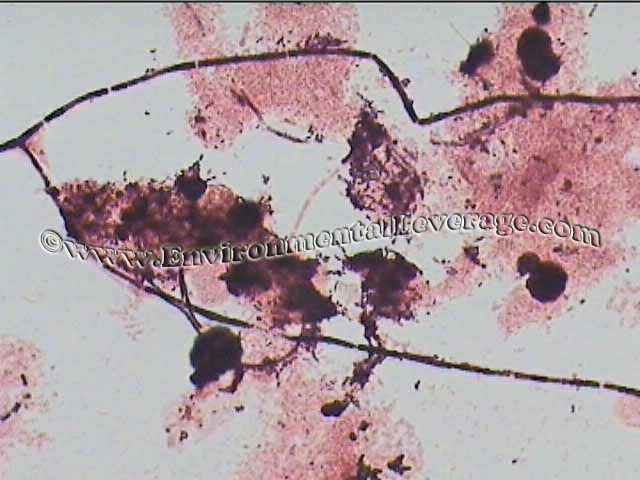
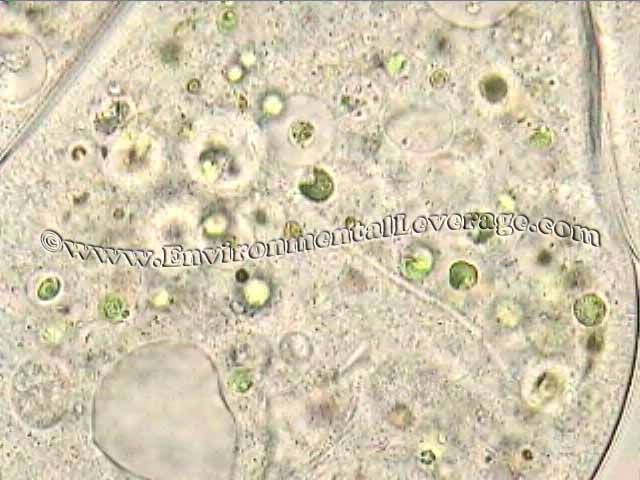
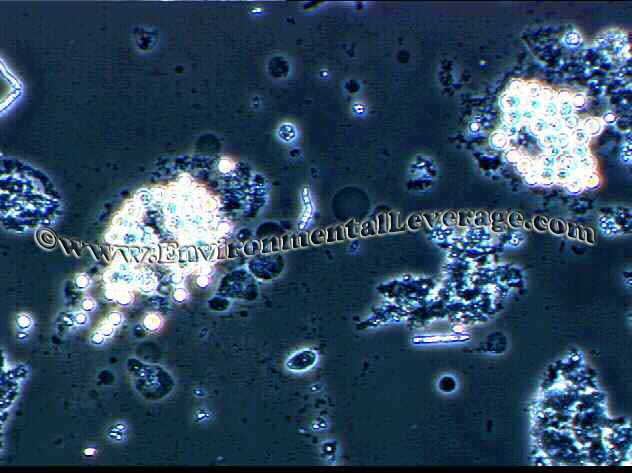
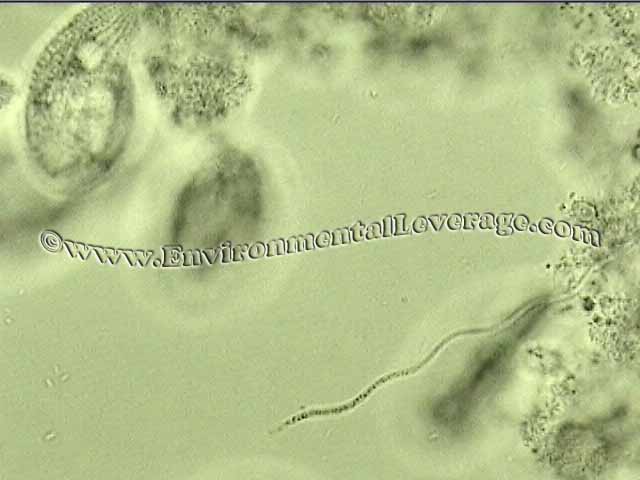
Fungi
Mold
Yeast
Algae
Aerobic and
anaerobic bacteria
MIC bacteria
(sulfate-reducing, acid producing, nitrate reducing,
Iron/sulfur
oxidizing)
Slime-forming
bacteria
Iron/manganese depositing bacteria
Cooling Tower Microbiological Water Analyses
 Cooling towers can be a critical process in many industrial production
facilities.
Cooling towers can be a critical process in many industrial production
facilities.An industrial cooling tower can be the perfect media for biological growth if not properly treated. Typical pH is 7-9 and temperatures may have a wide range.
In a cooling tower, the water trickles down a large surface area in order to air-cool the water. The natural evaporation provides the cooling necessary to reuse the water.
As water evaporates, minerals and contaminants in the water concentrate. These minerals and contaminants will eventually reach a concentration where they will cause problems and interfere with the performance of both the tower and the cooling system, itself. Fouling and corrosion of the cooling tower can impact treatment, and impact heat transfer losses causing decrease in efficiency and increased power consumption.
 Biofouling
can also destroy cooling towers if they are made of lumber. Corrosion can
occur on metal parts.
Biofouling
can also destroy cooling towers if they are made of lumber. Corrosion can
occur on metal parts. More seriously, such contaminants can be harmful to humans who come in contact with them, like operational and maintenance personnel. The most notable example has been the outbreaks of Legionnaires' disease, affecting people in hotels, hospitals, office buildings, and other locations, who have come into contact with cooled air from an air conditioning system contaminated from cooling tower water of the air conditioning plant.
What are the typical Biological species found that could cause corrosion and Biofouling?
Fungi
Mold
Yeast
Algae
Aerobic and
anaerobic bacteria
MIC bacteria
(sulfate-reducing, acid producing, nitrate reducing,
Iron/sulfur
oxidizing)
Slime-forming
bacteria
Iron/manganese depositing bacteria
Thiobacillus spp., Gallionella spp., Sphaerotilus spp.
Yeast and Fungi
 The
presence of large amounts of yeast or fungi can indicate a low pH, or
existence of fermentative conditions. There are more than 75,000 species of
yeast and fungi, which include mold, smut, rust and mildew. They may be
colorless or cover the entire color spectrum. Most grow best in warm, dark,
moist places. Most are aerobic with low oxygen demand. A few, including
yeast, are anaerobic. Fungi can grow on almost any surface and are
considered an attributing factor to wood deterioration. Both yeast and fungi
are commonly transported by air currents. They are relatively large and can
easily be identified with microscopic analyses.
The
presence of large amounts of yeast or fungi can indicate a low pH, or
existence of fermentative conditions. There are more than 75,000 species of
yeast and fungi, which include mold, smut, rust and mildew. They may be
colorless or cover the entire color spectrum. Most grow best in warm, dark,
moist places. Most are aerobic with low oxygen demand. A few, including
yeast, are anaerobic. Fungi can grow on almost any surface and are
considered an attributing factor to wood deterioration. Both yeast and fungi
are commonly transported by air currents. They are relatively large and can
easily be identified with microscopic analyses.
Fungi
 Two forms of fungi commonly encountered are molds (filamentous forms) and
yeast (unicellular forms). Molds can be quite troublesome, causing white rot
or brown rot of the cooling tower wood, depending on whether they are
cellulolytic (attack cellulose) or lignin degrading. Yeast are also
cellulolytic. They can produce slime in abundant amounts and preferentially
colonize wood surfaces.
Two forms of fungi commonly encountered are molds (filamentous forms) and
yeast (unicellular forms). Molds can be quite troublesome, causing white rot
or brown rot of the cooling tower wood, depending on whether they are
cellulolytic (attack cellulose) or lignin degrading. Yeast are also
cellulolytic. They can produce slime in abundant amounts and preferentially
colonize wood surfaces.Identification:
Fungi are extremely large, non-motile filaments (300-1000 µm). They can be straight, irregularly curved or bent filaments with true branching. Cells are very rectangular (3-8 x 5-15 µm) with very large trichomes and contain organelles and large intracellular granules and structures. A heavy cell wall is usually present.
Environment:
Fungi and yeast are usually found in environments where there is a low pH. They are usually common in a biotower or a trickling filter. They can cause "plugging or ponding".
Control:
Low pH is usually the cause of fungi and yeast. pH can be increased on the influent or in the MLSS to above pH 6 and usually with a little bit of time they disappear.

Yeast
Identification: Yeast are a
group of unicellular fungi a few species of which are commonly used to
leaven bread and ferment alcoholic beverages. Most yeast belong to the
division Ascomycota.
Similar Organisms:
Similar Organisms:
Yeast can be similar to Tetrads
The presence of large amounts of yeast in the wastewater
can indicate a low pH, the existence of fermentative conditions, or a severe
phosphorous deficiency. Raising the pH above 7 will usually make the yeast
disappear.
The presence of large amounts of yeast in the wastewater
can indicate a low pH, the existence of fermentative conditions, or a severe
phosphorous deficiency. Raising the pH above 7 will usually make the yeast
disappear.
Algae
 Algae
primarily occur in the tower deck area because most species require sunlight
for photosynthesis and growth.
Algae
primarily occur in the tower deck area because most species require sunlight
for photosynthesis and growth.Algae slimes can plug distribution nozzles and troughs in the cooling tower deck, causing poor water distribution across the tower and hence reduce cooling efficiency. Water intake screens may also become plugged by algae slimes that can slough off from the tower. The growth of algae may provide a food source that encourages the growth of other organisms, such as bacteria and fungi.
Algae require control because the biomass can also break loose and cause exchanger fouling. When this happens, slimy, rubbery masses form, which cause plugging and decrease the tower efficiency. Various types of algae can be responsible for green growths, which block screens and distribution decks. Severe algae fouling can ultimately lead to unbalanced water flow and reduced cooling tower efficiency.
Algae can be single celled and free floating, filamentous and cause mattes or can be slime forming.
Algae are typically photosynthetic organisms. Green and blue-green algae are very common in cooling systems. Blue-green algae are now classified with the bacteria and are called cyanobacteria.
What
type of Algae are you growing in your cooling tower?
Algae can be branched or Straight


Algae can be curled or in small free floating clusters with a slime coating


Anabaena Woronichinia naegeliana

 Achnantes taeniata is a brown algae
Filamentous Blue Green algae or cyanobacteria and Beggiatoa
Achnantes taeniata is a brown algae
Filamentous Blue Green algae or cyanobacteria and Beggiatoa

Aphanizomenon flos-aquae Scenedesmus and Flagellate


Branched algae Algae growing on cement and metal railings
Diatoms
Diatoms are algae enclosed by a silicaceous cell wall and may also be
present in cooling towers but generally do not play a significant role in
cooling system problems.



Microbiological Influenced Corrosion or MIC
MIC is corrosion or deterioration of material, which is initiated and/or
accelerated by the activities of micro-organisms. These materials are mainly
metal, but also can be concrete or plastics. 1/5 of all corrosion is
typically caused by microorganisms and biofouling. The most common MICs
can be categorized into sulphate reducing bacteria (SRB), iron oxidizing
bacteria and acid producing bacteria (APB). can include Desulfovibrio, Purple sulfur bacteria, Beggiatoa, Thiobacillus, Spaeratolis Natans SRBs are characterized by hydrogen sulfide odor and blackened water or black colored deposits. Iron oxidizing bacteria generally form in filamentous clumps and can be detected under microscope by their distinct appearance due the excreted products that grow. This corrosion by iron bacteria often forms tubercles.


Beggiatoa is a motile sulfur reducing filamentous Bacteria found in many biofilms


DesulfoVibrio Spirillum




Purple sulfur bacteria Spirillum and S natans


S. natans Filaments with sulfur granules


Iron Depositing Bacteria
Iron depositing bacteria grow best in low oxygen environments but are
common in open-circulation systems. Gallionella and Sphaerotilus use soluble, or ferrous, iron as an energy source, and convert
it to an insoluble oxide or hydroxide form. These deposits create fouling
and set up concentration corrosion cells and conditions under which
anaerobic bacteria flourish. Gallionella frequently leave spiderweb-like
deposits on metal surfaces. The deposit looks like black iron. Severe
corrosion is usually evident under the deposit.
Sphaerotilus use soluble, or ferrous, iron as an energy source, and convert
it to an insoluble oxide or hydroxide form. These deposits create fouling
and set up concentration corrosion cells and conditions under which
anaerobic bacteria flourish. Gallionella frequently leave spiderweb-like
deposits on metal surfaces. The deposit looks like black iron. Severe
corrosion is usually evident under the deposit. Gallionella spp.,
 Other
bacteria that may be present in cooling water include Pseudomonas,
Klebsiella, Eneterobacter, Acinetobacter, Bacillus, Aeromonas, and
Legionella Spore forming bacteria Denitrifying bacteria, or pseudomonas, can
cause the loss of nitrite inhibitor in closed-water systems. Usually plate
counts with differential media are used to determine the exact count of
these types of bacteria
Other
bacteria that may be present in cooling water include Pseudomonas,
Klebsiella, Eneterobacter, Acinetobacter, Bacillus, Aeromonas, and
Legionella Spore forming bacteria Denitrifying bacteria, or pseudomonas, can
cause the loss of nitrite inhibitor in closed-water systems. Usually plate
counts with differential media are used to determine the exact count of
these types of bacteria 
Biofouling Slime or Slime forming Bacteria







As you can see, there are quite a few different things
that can be determined under the microscope from Cooling tower water
samples.
Many things can be determined that can save time, money
and reduce multiple traditional tests.
No comments:
Post a Comment